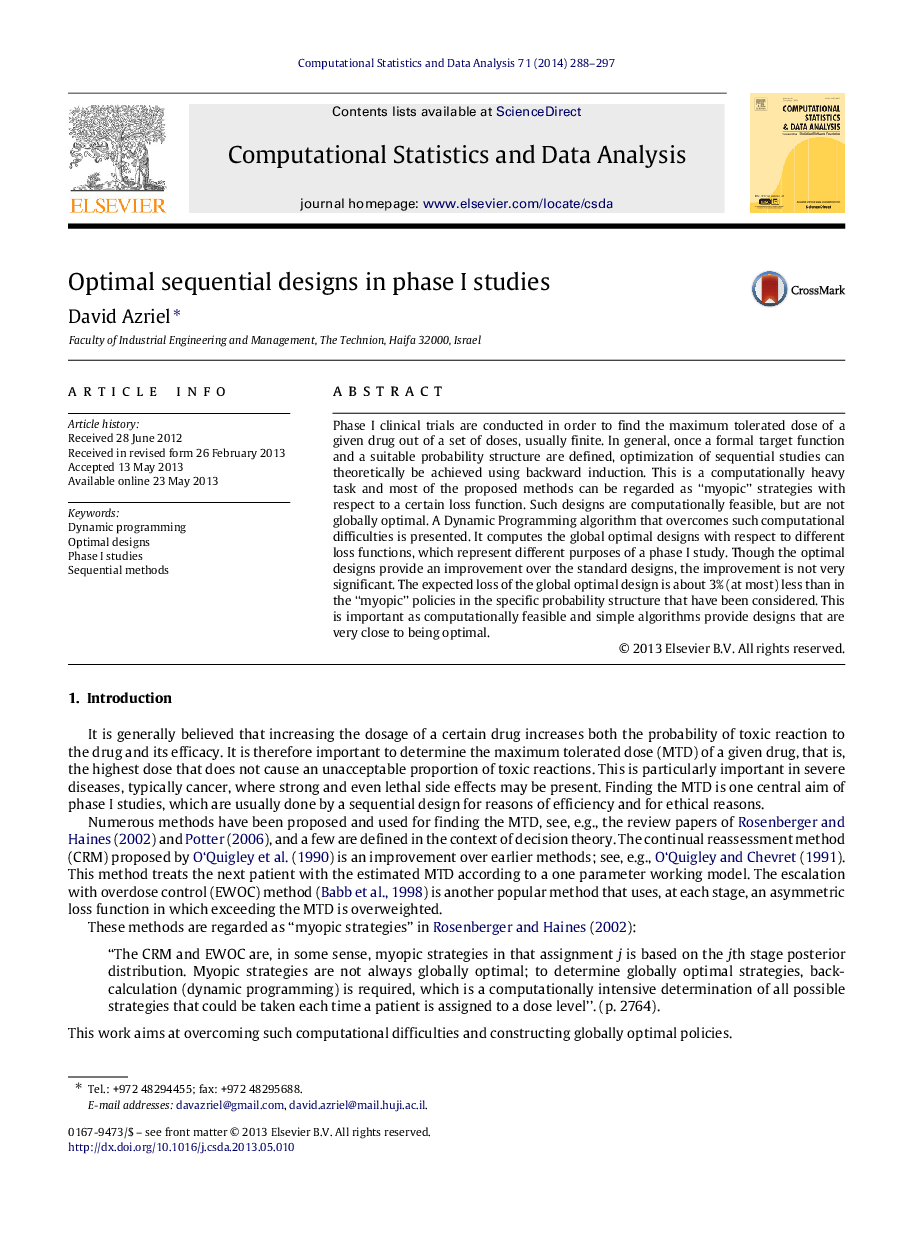| Article ID | Journal | Published Year | Pages | File Type |
|---|---|---|---|---|
| 6870375 | Computational Statistics & Data Analysis | 2014 | 10 Pages |
Abstract
Phase I clinical trials are conducted in order to find the maximum tolerated dose of a given drug out of a set of doses, usually finite. In general, once a formal target function and a suitable probability structure are defined, optimization of sequential studies can theoretically be achieved using backward induction. This is a computationally heavy task and most of the proposed methods can be regarded as “myopic” strategies with respect to a certain loss function. Such designs are computationally feasible, but are not globally optimal. A Dynamic Programming algorithm that overcomes such computational difficulties is presented. It computes the global optimal designs with respect to different loss functions, which represent different purposes of a phase I study. Though the optimal designs provide an improvement over the standard designs, the improvement is not very significant. The expected loss of the global optimal design is about 3% (at most) less than in the “myopic” policies in the specific probability structure that have been considered. This is important as computationally feasible and simple algorithms provide designs that are very close to being optimal.
Related Topics
Physical Sciences and Engineering
Computer Science
Computational Theory and Mathematics
Authors
David Azriel,
